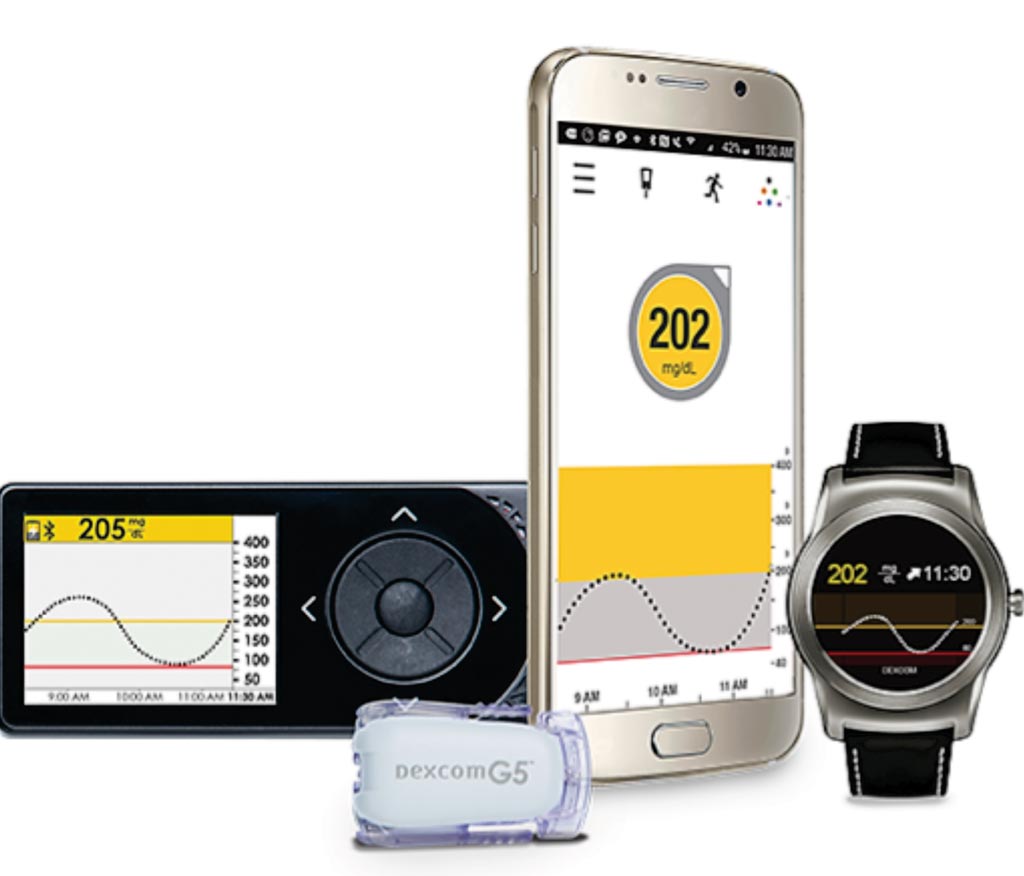Continuous Glucose Monitor Benefits Diabetics
By LabMedica International staff writers
Posted on 24 Apr 2018
Continuous glucose monitors (CGM) offer significant, daily benefits to people with type 1 diabetes, providing near-real time measurements of blood sugar levels, but they can be expensive.Posted on 24 Apr 2018
A continuous glucose monitor uses a tiny sensor inserted under the skin to test blood sugar levels every few minutes throughout the day and wirelessly sends those data to a monitor. The first generation of CGMs transmitted data to a stand-alone electronic device that looks like a pager, but newer models can work with apps on smartphones and smartwatches.

Image: The G5 mobile continuous glucose monitoring (CGM) system (Photo courtesy of Dexcom).
Scientists at the University of Chicago Medicine (Chicago, IL, USA) carried out a randomized trial of 158 patients with type 1 diabetes who relied on multiple, daily injections of insulin, but not an insulin pump. Two-thirds of the group used CGMs, and the remaining third used the finger prick method with test strips and a meter to check their blood sugars. Participants were surveyed at baseline and six months and had hemoglobin A1C equal to or greater than 7.5%. Within-trial and lifetime cost-effectiveness analyses were conducted.
At the end of the six-month trial, the total health care costs of using a CGM was USD 11,032, compared to USD 7,236 for manual testing. The cost differences were mostly due to the upfront cost of the CGM device of about USD 2,500, but the CGM group saw statistical reductions in their HBA1c levels (0.60 ± 0.74% difference in difference), a common measure of blood sugar control, and experienced fewer non-severe low blood sugar events.
The team also used a statistical model to simulate costs and health effects of CGM use over the average expected lifetime of patients. The model calculated a value called quality-adjusted life years (QALYs) for each patient, which represents the amount of time they live free of any complications or serious medical incidents. In the lifetime analysis, the CGM was projected to reduce the risk of complications from type 1 diabetes and increase QALYs by 0.54, basically adding six months of good health.
Elbert S. Huang, MD, Associate Director of the Chicago Center for Diabetes Translation Research, and senior author of the study, said, “Based on this analysis, the CGM looks like a very valuable technology, one that doesn't cause harm and makes people's lives better. Hopefully, this will become an important part of the decision-making process to make the CGM available to more people.” The study was published on April 12, 2018, in the journal Diabetes Care.
Related Links:
University of Chicago Medicine













